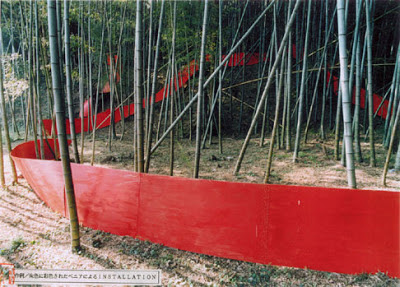Moribana. Slanting variation 1. Magnolia and Lisianthus.
Kenzan covered with broken glass for an icy effect.
Kenzan covered with broken glass for an icy effect.
A bud bears a promise of spring and new life. That's why buds are so important in ikebana, perhaps even more important than the open flowers. With a winter as long as the Norwegian, buds on naked branch awakens deep feelings. The bud is a symbol of hope.
In this arrangement, variation number 1 slanting style, the main feature is the big open space between the Magnolia branches. It symbolises the greatness of universe, a bit like when you get awe-struck by nature. A human being is quite small when standing under the big open sky, wether it is a starry night or a crispy cold winters day. In the slanting style the tallest branch stretches out in a soft elegant diagonal movement. Heaven is close to the earth - and not necessary that far away from anyone of us. Every ikebana arrangement bears a message about relationships and relatedness. The message of this style is that of both distance and closeness at the same time.
Looking for poetry on Magnolias I found this nice haiku that I would like to share with you. It's a newly posted haiku from AshiAkira's blog. If you like haiku and other poetry I recommend that you visit this blog. It has a lot of inspiring stuff and it's all original work.
In this arrangement, variation number 1 slanting style, the main feature is the big open space between the Magnolia branches. It symbolises the greatness of universe, a bit like when you get awe-struck by nature. A human being is quite small when standing under the big open sky, wether it is a starry night or a crispy cold winters day. In the slanting style the tallest branch stretches out in a soft elegant diagonal movement. Heaven is close to the earth - and not necessary that far away from anyone of us. Every ikebana arrangement bears a message about relationships and relatedness. The message of this style is that of both distance and closeness at the same time.
Icy wintry wind
Magnolia buds closed tight





.jpg)












